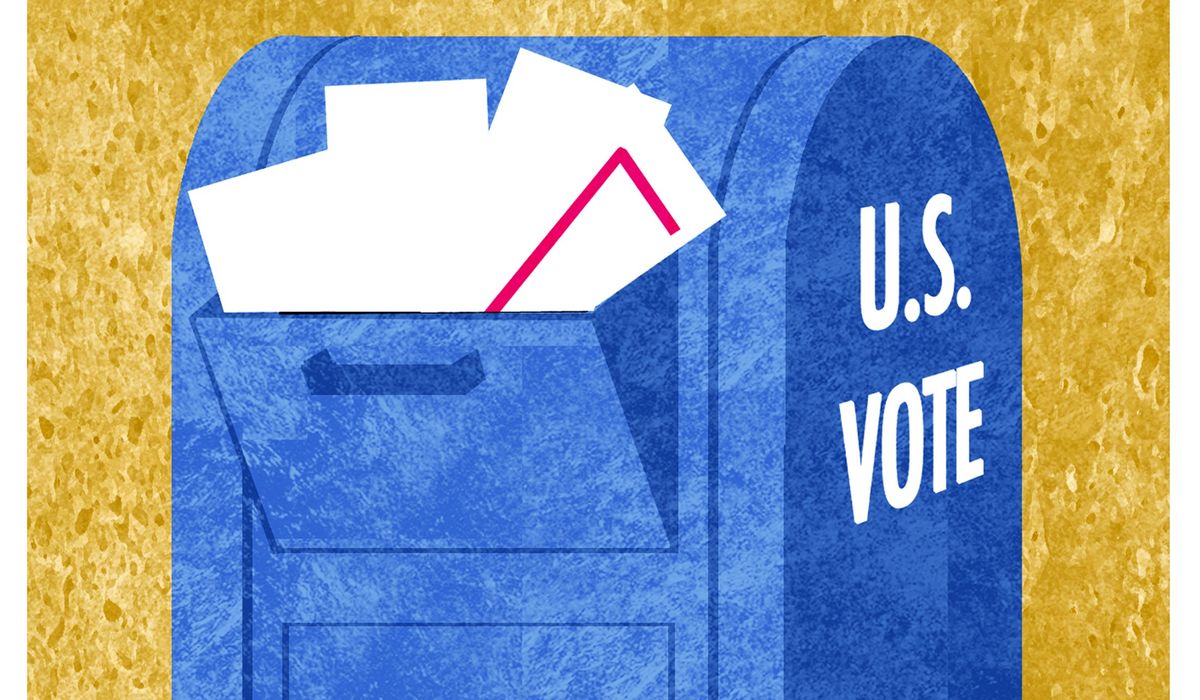Accounting for mail-in ballot fraud on both sides, 2020 election was a toss-up

OPINION:
We now have extremely strong evidence of rampant mail-in voting fraud in the 2020 election, thanks to a new poll conducted by the Heartland Institute and Rasmussen Reports.
As I will show below, the staggering level of voter fraud contaminates the 2020 results to a degree that they are nearly useless. It is highly possible that former President Donald Trump may have actually beaten President Biden when accounting for fraud on both sides.
According to the poll results, at a minimum, 1 in 5 mail-in voters committed at least one kind of voter fraud in the 2020 election.
Specifically, 21% of mail-in voters admitted that they filled out a ballot for a friend or family member; 19% admitted that a friend or family member filled out a ballot on their behalf; 17% admitted that they voted in a state where they are no longer a permanent resident; and 17% said they signed a ballot for a friend or family member with or without his or her permission.
Each of these instances is illegal.
As such, the most conservative possible estimate for mail-in ballot fraud is 21%. In reality, the true percentage is likely significantly higher because the fraud categories are not mutually exclusive.
For instance, one subset of poll respondents committed fraud by filling out a ballot for a friend or family member, while another subset committed a completely different type of fraud by casting a mail-in ballot in a state in which they no longer resided.
Before analyzing the effect of this fraud on the election results, it is vital to note that the poll’s demographic breakdown indicates that the percentage of Trump and Biden voters who committed fraud was roughly equivalent. Some, such as The Washington Post’s resident propagandist Philip Bump, claim that these percentages essentially cancel each other out and render the poll meaningless.
Mr. Bump’s assertion is ridiculous, as he well knows. While the poll does indicate similar percentages of fraudulent ballots, the total number of fraudulent ballots is most certainly not equivalent, and absolutely benefited Mr. Biden at a disproportionate rate. This is because a much greater percentage of Biden voters (58%) submitted mail-in ballots than Trump voters (32%).
Let’s dive in.
Estimates of the number of voters who cast ballots by mail in the 2020 election vary, though most appear to fall within the 40% to 50% range. For this exercise, I have chosen to use the nonpartisan Pew Research Center’s estimate, based on a survey of U.S. voters conducted in the immediate aftermath of the 2020 election.
Pew found, “A slim majority of voters (54%) say they voted in person this November, compared with 46% who voted by absentee or mail-in ballot.”
Of that 46%, Biden voters submitted mail-in ballots at a level nearly twice that of Trump voters: again, 58% to 32%.
According to the Cook Political Report, 158,397,726 votes were cast for Mr. Biden, Mr. Trump, or another candidate in 2020. Mr. Biden received 81,282,916 votes, and Mr. Trump received 74,223,369 — a margin of victory equaling 7,059,547 popular votes.
To arrive at the total number of mail-in votes for Mr. Biden and Mr. Trump, I combined the Cook Political Report’s numbers with the Pew Research Center’s percentages. Of Mr. Biden’s total votes, approximately 47,144,091 (.58 multiplied by 81,282,916) were submitted by mail. Of Mr. Trump’s total votes, approximately 23,751,478 (.32 multiplied by 74,223,369) were submitted by mail.
Now, we simply take 21% (the most conservative estimate of mail-in ballot fraud rate derived from the Heartland-Rasmussen survey) of those two numbers to arrive at the minimum estimate of fraudulent ballots. For the sake of fairness — and due to the data gathered in the survey — I assume that Biden voters and Trump voters committed fraud at roughly the same percentage rate.
Twenty-one percent of Biden’s mail-in ballots equals 9,900,259. Twenty-one percent of Trump’s mail-in ballots equals 4,987,810.38.
These two numbers constitute the total fraudulent votes cast for both candidates, based upon the sources cited in this piece.
Once we subtract the fraudulent ballots, Mr. Biden’s popular vote total shrinks to 71,383,657, and Mr. Trump’s shrinks to 69,235,559. Mr. Biden’s margin of victory (in terms of the popular vote) shrinks from the aforementioned 7,059,547 to only 2,148,098.
Again, these totals are drawn only from the most conservative estimate of mail-in voter fraud. The true estimate, as referenced earlier, is almost certainly significantly higher. And as the estimate of fraud climbs higher, Mr. Biden inherently receives a share of fraudulent ballots to a degree that is nearly double that of Mr. Trump.
For instance, if the percentage of fraudulent mail-in ballots was actually 30%, Mr. Biden’s popular vote total would have been 67,139,689, and Mr. Trump’s would have been 67,097,926, a virtual tie.
If the percentage of fraudulent mail-in ballots was 40%, Mr. Trump would have beaten Mr. Biden in the popular vote 64,722,788 to 62,425,280, by a total of 2,297,508.
Even using the most conservative estimate (21%), there is a strong argument to be made that — though Mr. Biden still barely comes out on top in the popular vote — Mr. Trump may have won the Electoral College vote, based upon the razor-thin margins by which Mr. Trump lost to Mr. Biden in key battleground states. That argument becomes significantly stronger as the mail-in ballot fraud estimate climbs, as I have just demonstrated.
That being said, a state-by-state electoral analysis is obviously outside the scope of this column. The point of this exercise is not to definitively state that a certain candidate actually won in 2020. Such a determination is impossible to make, with such egregious levels of fraud permeating the 2020 election.
Instead, the point of this exercise is to demonstrate that we have no way of knowing who truly won. Unless sweeping changes are made to our voting laws — starting with vastly restricting voting by mail — we won’t know with certainty who emerges victorious in 2024 or any other future elections, either.
Free and fair elections and trust in the integrity of our electoral institutions are the foundation of our constitutional republic. With the egregious amount of fraud that we have now found to be inherent in our current electoral system, our elections are far from fair. And I certainly do not trust the integrity of our electoral institutions as they stand. Do you?
• Jack McPherrin (jmcpherrin@heartland.org) is research editor at the Heartland Institute.


